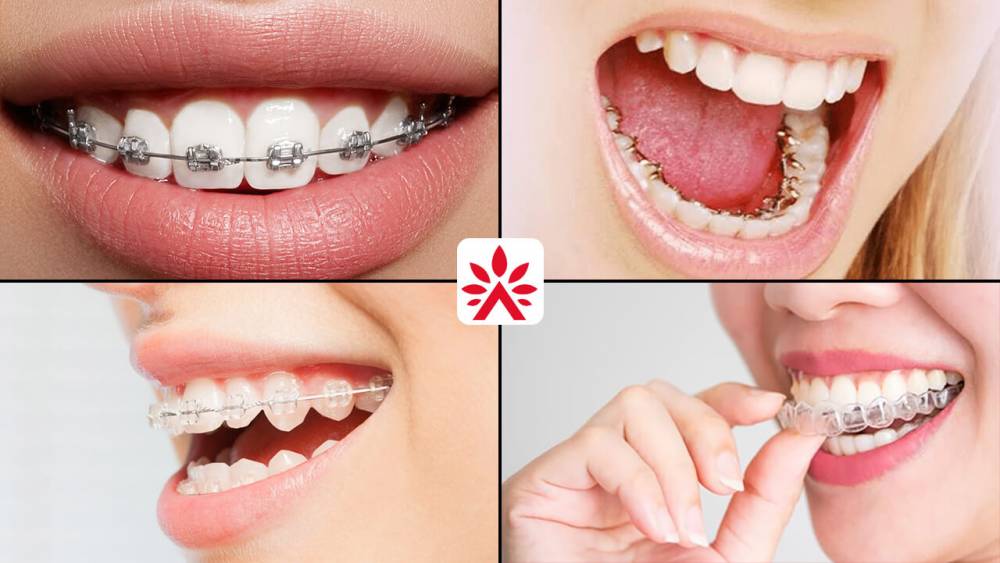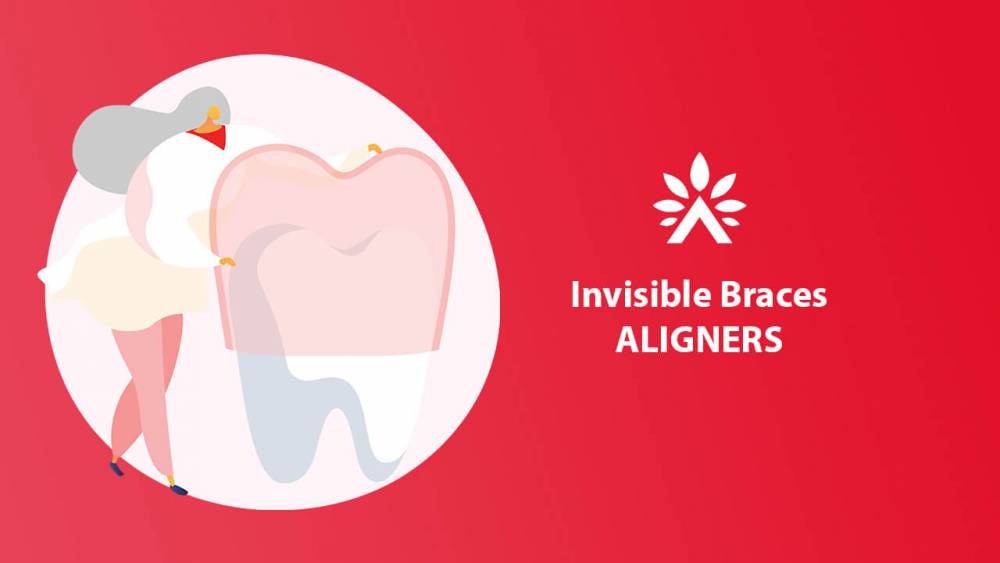
Disposal of Clear Aligners
How do you dispose of old Clear Aligners?
We are all becoming increasingly aware of the irrefutable fact that clear aligners have dominated the global market in recent years for the alignment of teeth. However, have we thought to ourselves what happens, and where do all the set of trays go after the completion of the smile journey?
The premise of the article
With the mass production of clear aligners, are we knowledgeable whether, in the grand scheme of things, this contributes to the carbon footprint? This article focuses on the disposal methods that are currently adopted for aligners and if it is possible to reduce carbon emissions and the impact it would have on fragile ecosystems such as marine and terrestrial ecosystems.
Can you recycle Clear Aligners trays?
To categorise aligners as non-biodegradable, an overview of its composition plays a vital role. According to literature, the two most used raw materials are polyethylene terephthalate [PET] and polyethylene terephthalate glycol [PETG]. Others include polypropylene, polycarbonate, thermoplastic polyurethane, and ethylene vinyl acetate. [1] According to the standardised tests and methodologies by the International Organisation for Standardisation, [ISO] for a polymer to be classified as biodegradable, more than 60-70% of the original sample must degrade within 6 months. [2] As PET is unable to meet this condition, this class of plastics is therefore non-biodegradable thermoplastic materials, taking around 500-700 years to degrade. [3]
Another drastic impact additives, in the manufacturing of plastic, have on the environment is the release of toxic pollutants; acrylonitrile, polychlorinated phenyls, dioxins, phthalates, and bisphenol A. Studies show the adverse effects of chronic exposure to these fumes result in neuro-degenerative, pro-inflammatory, hepatotoxic, and nephrotoxic effects. They can also cause allergies, induce carcinogenesis and metabolic disorders, such as diabetes mellitus type 2, insulin resistance, or obesity. [4]
What are the role of an ortodontist how to control Enviornmental Contamination?
SOP for their disposal
Now, the question arises whether aligners are sustainable for the environment? Given the composition and use, aligners are classified as biomedical waste. It is worth noting aligners come into contact with saliva, food particles, and other substances during use. Thus, it is of prime importance to have the trays thoroughly cleaned before recycling lest they end up cross-contaminating other recyclable substances.
Therefore, the following Standard Operating Procedures (SOP) are adopted for their disposal [5]
After the aligners are worn by the patient, they’re cleaned according to the manufacturer’s instructions to remove residual debris or adhesive, packed in a protective case, and returned to the orthodontist.
The orthodontist then disinfects them with an ultrasonic and UV light cleaning device.
The aligners are then put back in a zip lock bag and discarded in red bins as per the Management of Biomedical Waste (BMW) protocol [6]
SOPs implemented for Hepatitis B and C-infected patients
Special protocols for collecting aligners from patients with Hepatitis B (HBV) and Hepatitis C (HCV) will have to be set in place. They both are blood-borne, and HBV can also spread through saliva and other body fluids, resulting in dental procedures being one of the common risk factors for their transmission.
The guidelines of Centers for Disease Control and Prevention (CDC) state ethyl and isopropyl alcohol are effective against HBV. [7] According to literature, [8] HBV is highly susceptible to a 30% concentration of 1-propanol for 1 minute while >40% concentrations of ethanol and 2-propanol alcohol are required, irrespective of time exposure.
Another research [9] showed heat at 80oC for 5 minutes and UV treatment resulted in irreparable damage of the RNA, therefore, a loss of viral RNA replication, inactivating HCV. While disinfection with ethanol and 2-propanol also reduces infectivity significantly.
Finally, after the gloves are disposed of in red bins, hand hygiene of the practicing Orthodontist is followed using 2 alcohol-based rubs (Formulations I and II) recommended by WHO [10] for hand disinfection in healthcare settings reducing the pathogen load for transmission.
Practice in Pakistan and the UK for their disposal
Pakistan has not adopted a recycling programme, given the lack of evidence-based studies carried out on whether the multiple layers of plastic in aligners are recyclable is still an open topic for research.
Recently, some dental practices in the UK have partaken in TerraCycle, a recycling programme [11] for any brand of dental aligners that once collected, can be remolded into hard plastic. According to them, their process follows.
• Sortation and aggregation
Done manually and with the help of separation by size, gravity, sink/float, optical, air density, magnetic, and countless other techniques to aid in handling.
• Cleaning and processing
Plastics are sent over to third-party partners they are first weighed.
Further sortation can be carried out with a sink float tank; a technique to further separate the dust from plastic pieces according to density by the principle of fluid dynamics. The higher density, heavier dust sinks to the bottom, while the lighter plastic fractions float to the surface. [12]
Optical sorters separate plastics based on colour or the type of polymer to remove undetectable contaminants. SORTEX, a plastic sorting technology, is designed to organise and select plastic, with the help of colour and Infra-Red cameras and special LED, by eliminating the slightest colour variation, chroma, shape, and size of defects after primary, secondary, and tertiary processing. The high-definition cameras are connected to a computer programme predefined by the user, activating valves within the machine to filter out unwanted colours and polymers from the plastic waste. [13]
Air separators separate plastic using the principle of aerodynamics. This process uses airflow being regulated as the sorting medium, with materials sorted according to density and particle size. The lighter materials are carried upwards or horizontally, while heavy materials fall due to gravity, or are horizontally thrown to a farther distance due to inertia. [14]
Magnetic Separators using superconducting magnets are also used to separate plastic since they are diamagnetic materials with newer methods using the magneto-Archimedes principle. [15]
• Conversion to raw materials
Once secondary sortation is completed, they are shredded and remolded into pellets and granules.
Recycled plastic can now be sold to manufacturing companies to be used in a multitude of utensils, furniture, containers, shipping equipment, appliances for construction, etc
Little steps towards going green have been implemented in some practices in the UK, however, understanding the composition of aligners involves separating multiple layers of different plastic makes the expenses for the machinery and labour for recycling a lot more of a complicated and costly process than simply recycling normal ‘PET bottles’.
Authored by: Dr. Maha Rizvi
Reviewed by : Dr. Zahra Masood
References:
1. Bichu YM, Alwafi A, Liu X, Andrews J, Ludwig B, Bichu AY, et al. Advances in orthodontic clear aligner materials. Bioactive Materials [Internet]. 2023 Apr 1;22:384–403. (https://www.sciencedirect.com/science/article/pii/S2452199X22004303)
2. Hiraga K, Taniguchi I, Yoshida S, Kimura Y, Oda K. Biodegradation of waste PET. EMBO reports. 2019 Oct 24;20(11).
3. Barak M. Why Does It Take Plastic So Long to Break Down? | Davidson Institute of Science Education [Internet]. Why Does It Take Plastic So Long to Break Down? 2020. (https://davidson.weizmann.ac.il/en/online/askexpert/why-does-it-take-plastic-so-long-break-down#:~:text=Under%20normal%20conditions%20in%20nature,process%20will%20be%20very%20slow.)
4. Żwierełło W, Maruszewska A, Skórka-Majewicz M, Goschorska M, Baranowska-Bosiacka I, Dec K, et al. The influence of polyphenols on metabolic disorders caused by compounds released from plastics - Review. Chemosphere [Internet. 2020 Feb] 1;240:124901. (https://www.sciencedirect.com/science/article/pii/S004565351932140X)
5. Gupta S, Ahluwalia R, Gupta N, Rana S. Aligners-Their Properties and Disposal. Journal of Pharmaceutical Negative Results [cited 2023 Jun 16];13. (https://www.pnrjournal.com/index.php/home/article/download/1643/1399/1959)
6. (https://www.ncbi.nlm.nih.gov/pmc/articles/PMC4325173/)
7. Shukla S, Chugh T, Ahluwalia R. Biomedical waste segregation in orthodontics after COVID. Santosh Univ J Health Sci 2022;8:62-4. (https://www.sujhs.org/article.asp?issn=2773-1987;year=2022;volume=8;issue=1;spage=62;epage=64;aulast=Shukla)
8. https://www.cdc.gov/infectioncontrol/guidelines/disinfection/disinfection-methods/chemical.html
9. Than TT, Jo E, Todt D, Nguyen PH, Steinmann J, Steinmann E, et al. High Environmental Stability of Hepatitis B Virus and Inactivation Requirements for Chemical Biocides. The Journal of Infectious Diseases. 2018 Oct 24;219(7):1044–8. (https://www.ncbi.nlm.nih.gov/pmc/articles/PMC6420165/#:~:text=For%20ethanol%2C%20a%20concentration%20of,1%20minute%20(Figure%202A))
10. Pfaender S, Brinkmann J, Todt D, Riebesehl N, Steinmann J, Steinmann J, et al. Mechanisms of Methods for Hepatitis C Virus Inactivation. Griffiths MW, editor. Applied and Environmental Microbiology. 2014 Dec 19;81(5):1616–21. (https://www.ncbi.nlm.nih.gov/pmc/articles/PMC4325173/)
11. World Health Organization (WHO). WHO guidelines on hand hygiene in health care: first global patient safety challenge clean care is safer care. WHO, 2009; ISBN 9789241597906 (https://apps.who.int/iris/bitstream/handle/10665/44102/9789241597906_eng.pdf;jsessionid=2A7E7D7937CCBB2D7E6431332C361A1B?sequence=1)
12. The Spotlight Oral Care Aligners Free Recycling Programme | TerraCycle UK [Internet]. TerraCycle. [cited 2023 Jun 16]. (https://www.terracycle.com/en-GB/brigades/spotlight-oral-care-uk#@54.39586446195522:-2.83447377734376zoom:5)
13. Li T, Echempati R, Fiedler R. Analysis and redesign of structural walls of a Sink-float-tank of a plastic recycling machine [Internet]. (https://asee-ncs.org/proceedings/2015/Paper%20files/Student_Papers/2015_ASEE_NCS_Conference_submission_7.pdf)
14. Optical sorters | AP Plastica [Internet]. ap-plastica.it. [cited 2023 Jun 16]. (https://ap-plastica.it/en/selezionatrici-ottiche/#:~:text=The%20optical%20sorterfor%20plastics%20is,market%20leader%20in%20this%20technology.)
15. Air separator for waste recycling - MSWsorting [Internet]. (https://www.mswsorting.com/Waste-Sorting/Air-Separator.html)
16. Ueda, Y., Mishima, F., Akiyama, Y., & Nishijima, S. (2014). Fundamental Study of Plastic Separation Utilizing Magnetic Force. IEEE Transactions on Applied Superconductivity, 24(3), 1–5.
Posted On 15 Aug, 2023


